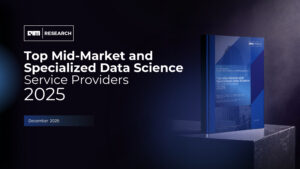Roboflow’s journey began in January 2020 with a simple yet powerful mission: to make the world programmable through visual understanding. Founded by Joseph Nelson and Brad Dwyer, the company was born from their frustrations with how challenging it was to build and deploy computer vision models. Training a model often meant endless hours of manual data labeling, managing messy datasets, and writing repetitive code. The process was inefficient and inaccessible to many. Nelson and Dwyer sought to change that by creating a platform that simplifies computer vision workflows, empowering developers to focus on solving real-world problems.
Today, Roboflow is at the heart of a growing shift in how organizations interact with visual data. From manufacturing and logistics to healthcare and environmental research, the company’s tools are helping businesses leverage the power of sight. More than 25,000 organizations, including over half of the Fortune 100, rely on Roboflow’s platform to build and deploy computer vision applications. It is being used to scan products for defects, track player movements at major sporting events, and even monitor coral reefs.
One example is Pella Windows & Doors, which has integrated Roboflow to detect flaws in its products, ensuring higher quality for customers. Automaker Rivian uses the platform to streamline quality control on its production lines, while BNSF Railway employs Roboflow to track and inspect inventory across massive rail yards, improving efficiency and safety in an environment that often handles up to 10,000 containers at a time. Even broadcasters for the Wimbledon and U.S. Open tournaments are using Roboflow’s tools for precise tracking of players and balls, enhancing the viewing experience for millions.
These real-world applications highlight Roboflow’s ability to bridge the gap between software and physical environments. Nelson, who grew up on a corn and soybean farm in Iowa, often reflects on how technology can transform traditional industries. For his parents, seeing Roboflow partner with a major agricultural equipment manufacturer was a moment of validation—proof that the company was solving real problems in industries that matter.
Roboflow’s rise has caught the attention of major investors. The company recently secured $40 million in a Series B funding round led by GV, formerly Google Ventures. Craft Ventures and Y Combinator joined the round, alongside notable individual investors such as Guillermo Rauch of Vercel, Google’s Jeff Dean, and Amjad Masad of Replit. Roboflow’s existing backers include prominent names like Lachy Groom, Sam Altman, and Scott Belsky, signaling strong confidence in the company’s trajectory.
The platform’s popularity is driven by its ease of use and adaptability. Developers across industries have embraced Roboflow’s open-source tools, which have been downloaded more than one million times in just the last month. The company’s tools simplify every stage of the computer vision process, from managing datasets to automating labeling and deploying models at the edge or in the cloud. One key offering, Autodistill, uses foundation models to label data automatically, drastically reducing the time required to prepare training datasets. This emphasis on efficiency has made Roboflow a cornerstone of the computer vision community.
Roboflow’s community-driven ethos is evident in the success of Roboflow Universe, its open-source hub that hosts over 500,000 datasets, 500 million images, and 150,000 pre-trained models. Developers on the platform have already consumed over a million GPU hours on its public plan, advancing computer vision at an unprecedented scale. Even industry leaders like Meta AI have recognized Roboflow’s impact, noting how its tools saved users the equivalent of 74 years in dataset preparation time.
As the volume of visual data continues to grow exponentially, Roboflow is positioned to meet the demand for faster, smarter tools. CEO Joseph Nelson believes that visual understanding is fundamental to intelligence. “Our sense of sight predates our use of language,” he says. “Yet so much software today doesn’t leverage the ability to truly see and understand the world. That’s what we’re changing with Roboflow.”
Crystal Huang, general partner at GV and the newest addition to Roboflow’s board, sees vast potential in visual AI. She notes that industries like manufacturing, logistics, and healthcare—sectors that drive over 40% of global GDP—stand to benefit immensely from tools that bring clarity to complex visual environments. For Huang, Roboflow represents an opportunity to unlock untapped potential in these spaces.
Since its founding, Roboflow has demonstrated an ability to evolve alongside advances in AI. The adoption of generative AI, small and fast edge models, and multimodal systems has only accelerated the company’s growth. Roboflow’s commitment to staying ahead of state-of-the-art advancements ensures that its users remain at the forefront of innovation. Nelson emphasizes that the company’s mission goes beyond technology. “We’re building for a world where software can truly understand the physical environment. It’s about making decisions more informed, processes more efficient, and solutions more impactful.”
With its $40 million Series B funding, Roboflow is poised to expand its platform, refine its tools, and deepen its engagement with a rapidly growing community of developers and enterprises. As visual data becomes an even more integral part of how businesses operate, Roboflow is well-positioned to help the world see—and understand—what’s possible.





